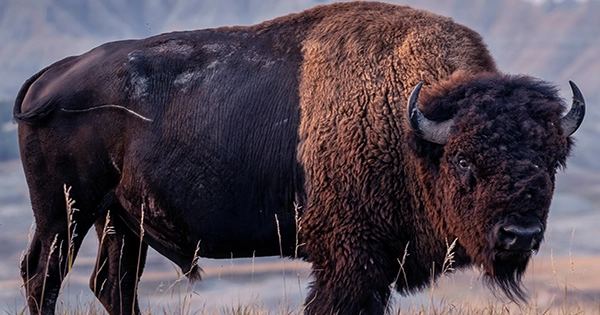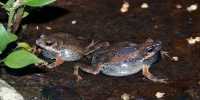A bison with two lifetimes was called Blue Babe. The first happened 50,000 years ago, when a lion killed a steppe bison (Bison priscus) that had been roaming Alaska. The second started when its mummified remains were removed from the permafrost in the interior, where they had been preserved through the Ice Age.
The sole known instance of a Pleistocene bison recovered from the permafrost, the extraordinarily well-preserved bison was found by gold miners in 1979 and presented to scientists as an unique find. Despite this, it didn’t stop a group of gastronomically intrigued academics from cooking up a pot of bison neck stew from the Pleistocene.
Strong Aroma of the Pleistocene: Paleontologist Dale Guthrie, who played a key role in rescuing Blue Babe from the environment, would host the peculiar dinner party at his Alaskan house. Initial collagen analysis of the bison’s remains suggested that they were about 36,000 years old, but more recent research has altered this to 50,000 years.
After dying, Blue Babe quickly transformed into a Pleistocene popsicle, leaving behind muscle tissue that was nearly as well-preserved as beef jerky, complete with fat and bone marrow. With so much to choose from, the research team made the decision to follow the lead of Russian researchers who came before them by incorporating some of the findings into a meal.
Guthrie described the occasion as “a bison stew dinner for him and for Bjorn Kurten, who was presenting a guest lecture, to culminate and honor Eirik Granqvist’s [the taxidermist] work with Blue Babe.” The mummy’s neck was cut into small pieces and cooked in a stew with broth and veggies.
“Blue Babe was our dinner choice. No one in attendance would have dared to overlook the well-aged but still slightly rough flesh that gave the stew a distinct Pleistocene fragrance.
Collar Stew: Making neck steak “didn’t sound like a very nice idea,” Guthrie told Atlas Obscura when asked why they chose stew. But, you know, it wouldn’t be that horrible if we added lots of vegetables and spices.
The flavor may have been saved by a little culinary magic, but the contents of Blue Babe’s abdomen, which had obviously rotted when the animal first froze all those thousands of years ago, were beyond saving.
Where tooth fragments were still present, Blue Babe’s neck showed signs of lion predation. However, because the bison’s neck muscles had been cut, the tissue in this area froze very quickly and was still relatively fresh when it thawed 50,000 years later.
When it thawed, it released an identifiable beef aroma that was not unpleasantly blended with a subtle earthy smell and a hint of mushroom, according to Guthrie. On April 6, 1984, a group of about a dozen people gathered to consume bison priscus stew.
And if you’re wondering how their bodies held up after consuming meat that was 50,000 years old, it seems they did just fine.
“The dinner tasted great, and none of us experienced any negative side effects.”














